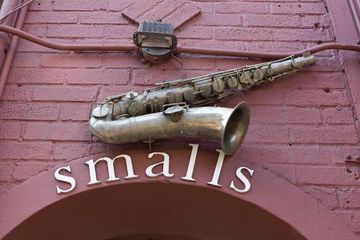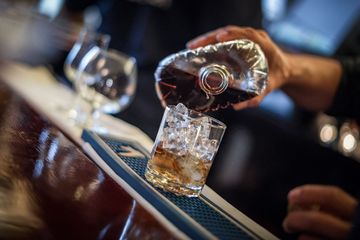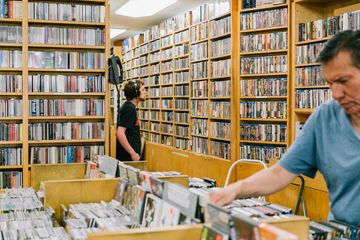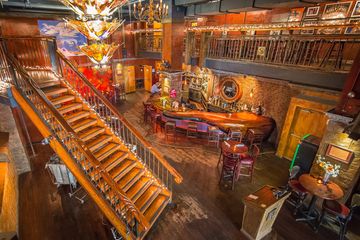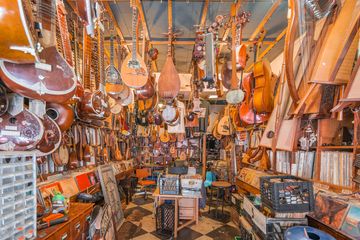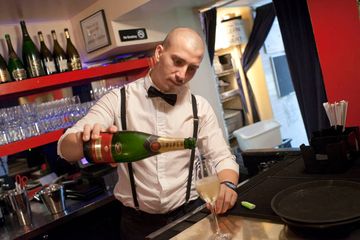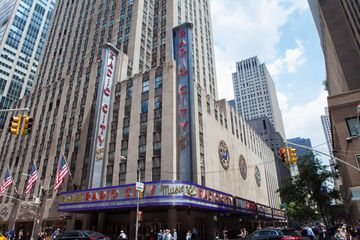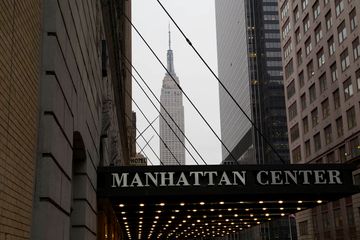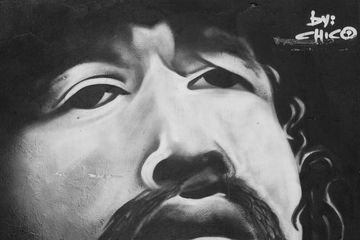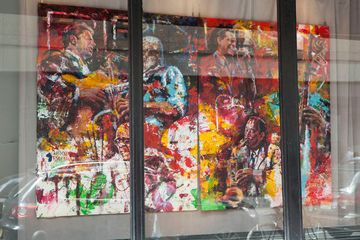While sitting comfortably in the lounge area of The Pierre Hotel, I literally witnessed the conception of a "pop-up. " A table and chairs were being rolled out and within minutes set up elegantly with a black tablecloth and rose petals strewn across the center. The staff at Two East were preparing for their Tuesday evening Social Club. Engaging in conversation with executive chef Ashfer Biju, head pastry chef Michael Mignano, Director of Marketing, Emily Venugopal and singer, Claire Khodara, they each offered their personal connection to this very special evening as it was getting ready to unfold. One might think of it as "unusual, " seated at this table, Emily stated, but she assured me that I would feel like I was in my own little world, elevated - propped up on comfortable bar level chairs surrounded by other foodies - where I would be able to watch and listen to Claire, the performer of the evening, while others sat below quietly enjoying a drink, some appetizers and pleasant background live music. The concept behind Chef Ashfer's Social Club is purely to bring people and food together in the best possible setting. His feeling is that people work hard and have little time to socialize outside of the office. Inside the Pierre's lounge area, men and women are encouraged to treat themselves to a mystery night out either solo, with a date, or, of course, book the entire communal table for twelve. No matter the choice, diners are promised to be taken on a culinary adventure. For $95. 00, the kitchen rolls out fourteen different courses with a cocktail to kick it off and wine pairings throughout the meal. The best part, however, was each time the two chefs popped out from the kitchen to explain what we were tasting, what inspired the dish, and to educate us on the wonders of curry and other spices. I enjoyed listening to Ashfer's extraordinary stories of travel around the world. He has cooked with a multitude of chefs who exposed him to tastes and flavors from Malaysia to the Maltese Islands, and from the Middle East to the Maldives. I was, thus, eager to participate in that evening's "Two E Returns East, " a themed meal accenting ingredients from China, Japan and India. Ashfer was born into a family of restaurateurs. His father continues to run two dining spots in Southeast Asia, but it was his grandfather who appears to have had a profound influence on him. Despite his efforts to convince other family members not to go into this business, after speaking with Ashfer for over an hour, I realized that it was this man that instilled the spark of travel and the love of food in him from a very early age while growing up in India. Apparently, the Pierre has a wondrous way of luring its chefs back, as is the case with Michael Mignano, who worked in the hotel's kitchen from 1998 until 2005. In 2011, he heeded the call to return as head pastry chef. For those years in between, Michael worked with the creme de la creme in the dessert world, appeared on Food Network shows, and ran his own, highly successful bakery in Port Washington, NY. As Ashfer referred to Michael, "He is my trump card in the kitchen. " Listening to the two men finish each other's sentences gave me deep insight into how well their relationship works. Together, they explained how they choose not to follow trends, but rather prefer to "create the trend, themselves. " They went on to say that it is always a chef's goal to be recognized, but that most do not realize what goes into preparing an exceptional meal. Yes, it is a science, but to these two men it is truly an art - one that takes a lot to pioneer day in and day out. They then described themselves as "artists of the senses - all five of them. "When discussing what influenced Michael most to pursue a career in cooking, he explained that he grew up in Queens, where food and family were at the core of his existence. He continued on by saying that he had a huge diversity of friends. "Since the age of five, I went to people's homes who were from Vietnam, South Africa, Europe - you name it. " He learned to try everyone's cooking and to appreciate not only the magic that goes into every dish, but also the passion. Today, Michael said that he continues to incorporate slight nuances from his own childhood experiences into each of the delectable desserts he imagines. Participating in our discussion was Claire. I would shortly have the pleasure of listening to her melodic voice while I indulged in course after course of some of the best vegetarian food (specially prepared for me) I have ever had. Although Claire only began her singing engagements at The Pierre in early 2015, she has already established her own following including a large showing of friends and family who come by to support her. Claire has spent a considerable amount of time flying back and forth between the U. S. and England, where she went to university and began her singing career. Moving back to New York at one point, she made it quite far on season nine's American Idol, and then, as she stated, "I sang at weddings and did a lot of the national anthem singing hoping to become a rockstar. " It was not until she returned to England, met her future husband, and was, ultimately, recognized by London's most elite, iconic clubs, including the exclusive Annabel's, that her career took off. Claire, once again, resides in New York, but continues to fly across the pond to perform in London. Upon her arrival back in the States, she put together an album, which Sony described as "country jazz, " though she prefers to call her music "soul pop. "When I asked Claire if she would be able to simply state her mission to me as a singer, she thoughtfully replied, "I honestly want to spread peace. I want to make people feel calm and relaxed. " She stopped herself and asked, "Does that sound dorky? " After listening to her for three straight hours, my answer is, without a doubt, no. Claire's voice was a beautiful backdrop to an evening filled with interesting company, phenomenal food and two extraordinary chefs. Special note: When Claire was searching for someone to "dress" her for her nightly performances on stage, she turned to Zac Posen, who designed the dress that her mother wore to her wedding. Claire said it is such fun to have ten outfits arrive each week from Zac that she can select from - sadly she must return them afterwards - but, in the meantime, she does look stunning as she is a tall magnificent woman, both inside and out. It was interesting to learn a bit about Zac Posen - this renowned designer who, although an international star with his classic, chic clothing, has his roots right here in Brooklyn. Two Manhattan Sideways team members, Tom and Olivia, returned to the Two E Lounge for a special event towards the end of 2015. Diwali is the Hindu festival of lights that occurs every autumn in the northern hemisphere. They found the space to be completely transformed from when we were last there listening to Claire Khodara sing: flower petals, chrysanthemum heads, and candles covered every available space and a tower with cubby holes filled with Indian delicacies occupied the center. The two told me that they have never seen such exquisite saris as the ones worn by the guests. Together with a room filled with guests, Tom and Olivia dined on small shot glasses full of goat cheese, beet, and orange slices as well as rock shrimp with tamarind aioli while listening to the chill sounds of Sa, a group that performs music with Indian root melodies. There was a “Tawa and Chaat” station where cooks served up lamb kebabs, green pea samosas, and more. On the other side of the room, an appetizer table was set up with traditional Indian food reinterpreted, including lamb koftas, biryani bowls, and kulchas. Ashfer proudly told Tom and Olivia that his sous chef, Manjit Manohar, had a large part in the menu for the evening. As Tom was taking a shot of Ashfer, Manjit, and Michael, the plates of mouth-watering Indian-inspired desserts were brought out, decorated with gold flecks. This was the Pierre’s first attempt at hosting a Diwali celebration, but we have no doubt that the beautiful décor, and visibly happy guests will inspire them to continue this tradition in 2016.
